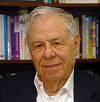This is a telling matrix sent from our friend Giesla with Alaskans Against the NAIS:
January 22, 2010The Center for Sustainability California explains:
Advice 3082-G/3598-E
(Pacific Gas and Electric Company ID U 39 M)
Public Utilities Commission of the State of California
Subject: Green Communities Program Advice Letter Pursuant to D.09-09-047
Pacific Gas and Electric Company (PG&E) hereby submits its Green Communities (GC) Program Advice Letter for its 2010-2012 Energy Efficiency (EE) Portfolio in compliance with Decision (D.) 09-09-047, Ordering Paragraph (OP) 20 and other directives of the Decision.
From: Brian K. Cherry
Vice President
Regulatory Relations
77 Beale Street, Room 1087
San Francisco, CA 94105
Mailing Address
Mail Code B10C
Pacific Gas and Electric Company
P.O. Box 770000
San Francisco, CA 94177
"This program supports the Strategic Plan’s goal for 50% of governments to
adopt energy/sustainability/ climate action plans by 2015 and 100% by 2020."
http://www.pge.com/nots/rates/tariffs/tm2/pdf/GAS_3082-G.pdf
Green Communities http://www.greencommunitiesonline.org/ offers Sustainability Training Grants too.Energy Efficiency (R.09-11-014)
What’s this? This rulemaking continues the work of R.06-04-010 and serves as the forum for the CPUC’s continued implementation of the California Energy Efficiency Strategic Plan as well as the forum for initiating the next planning cycle for 2013-2015 energy efficiency program plans, funding levels, and related issues.
What’s new?
On August 24, the CPUC issued a Proposed Decision, proposing to adopt the Lighting Chapter of the California Long-Term Energy Efficiency Strategic Plan and require that the chapter’s adopted strategies be incorporated into energy efficiency program planning and implementation starting in 2011. Decision (D.)09-09-047 directed the CPUC Energy Division to create a lighting chapter for inclusion in the plan, including specific goals, strategies and milestones in the chapter for transformation of the lighting market in California and to solicit the input of key stakeholders through meetings and/or public workshops. Comments on the proposed decision must be filed by September 13, and reply comments must be filed by September 20. http://energycenter.org/index.php/public-affairs/whats-new/1044-energy-efficiency
Is there a Constitution for the New Green Order? http://www.green-agenda.com/agenda21.html
Is there a Local Agenda 21 Model Communities Program? http://www.idrc.ca/openebooks/448-2/ From this link:
FOREWORD
In 1992, the leaders of 179 countries gathered in Rio de Janeiro for the United Nations Earth Summit to finalize a global action plan for sustainable development, called Agenda 21. In this document, they recognized that because “so many of the problems and solutions being addressed by Agenda 21 have their roots in local activities, the participation and cooperation of local authorities will be a determining factor in fulfilling its objectives.” Agenda 21 further calls upon local authorities in every country “to undertake a consultative process with their populations and achieve a consensus on ‘Local Agenda 21’ for their communities.”
When this mandate was set out in 1992, there was little information available on how to proceed. It therefore gives me particular satisfaction to report that, since 1992, more than 1,300 local authorities from 31 countries have responded to the Agenda 21 mandate by developing their own Local Agenda 21 action plans for sustainable development.
The task of mobilizing and technically supporting Local Agenda 21 planning in these communities has been led by the International Council for Local Environmental Initiatives (ICLEI) and national associations of local government. Now, with the further support of the International Development Research Centre and the United Nations Environment Programme, ICLEI is able to present the first worldwide documentation of Local Agenda 21 planning approaches, methods, and tools in this Local Agenda 21 Planning Guide.
The planning framework presented in the Guide has been derived from real-life Local Agenda 21 planning efforts around the world. The framework is being tested and reviewed by municipal professionals from 14 countries, North and South, East and West. The Guide should therefore provide a very useful introduction and technical resource on Local Agenda 21 planning to municipal professionals and NGOs facing a variety of development conditions.
The transition to sustainable development is not a soft option, but an imperative for our survival and well-being. It is going to require a great deal of courage and commitment from all sectors, including municipalities, to ensure its success.
Even as urban areas increasingly represent a concentration of our greatest social, economic, and environmental problems, they offer opportunities for some of the most effective solutions. They encompass great pools of talent and expertise within their many sectors, which local government officials can pull together to work on local strategies for action.
In my parting words at the conclusion of the Earth Summit, I said that we all “must move down from the Summit and into the trenches where the real world actions and decisions are taken that will, in the final analysis, determine whether the vision of Rio will be fulfilled and the agreements reached there implemented.” Of the many programs that have resulted from the Earth Summit, none is more promising or important than this one, which has hundreds of local authorities around the world now setting out and implementing their Local Agenda 21s.
Maurice Strong
FOREWORD
Today, humanity is on the move as never before. Driven from the countryside by political turmoil, population pressures, and ecological breakdown, most of those who head for the city do so to seek a better quality of life.
But this massive movement has only further strained the resources and infrastructure of already overburdened cities. The most explosive growth has been in the Third World, which has 213 cities of more than a million people and some 20 at the 10 million mark. The blanket of smog that hangs over cities such as Rio de Janeiro, Mexico City, Delhi, Beijing, and tens of thousands of smaller cities is symbolic of more critical problems—of vulnerability to environmental sanitation problems, to natural disasters, and to man-made disasters such as chemical plant accidents and urban fires.
The increasing pace of global integration will determine whether in the future the lines that separate a city, a country, a region, and a continent will become progressively more blurred. But one thing is clear: the fate of cities will determine, more and more, not only the fate of nations but also of our planet. We can afford to ignore the issue of the sustainable management of our cities only at our peril.
How can sustainable development be made meaningful at the local level? How can we develop systems to involve the stakeholders in devising appropriate solutions to local environment and development issues? How can the quality of municipal services be improved and integrated to address the environmental, economic, and social prospects of the communities?
These questions are critical, especially since terms like sustainable development and environmental conservation can often conjure up images of processes too grand for local communities and their organizations to handle and influence. Clearly, sustainable development at the municipal level requires an entirely different approach to the planning and provision of services.
The Local Agenda 21 Planning Guide, prepared by the International Council for Local Environmental Initiatives (ICLEI), introduces just such an approach—a planning framework for sustainable development at the local level. In simplest terms, the Guide documents a process for developing action plans to address complex problems inherent in modern urbanized societies. It presents a framework for engaging local authorities with residents and local organizations in the design and provision of services to the community, while simultaneously protecting local, regional, and global ecosystems.
In presenting this planning framework, ICLEI has given us a book filled with insights that subvert many of our most basic assumptions and suggest fresh ways to think about them.
For all these reasons, the Local Agenda 21 Planning Guide is more than just another book. It is a lever for changing the art of managing sustainable development at the level of local government. Indeed this guide can serve as a symbol of today’s historic transformation in the concept of partnerships—one that no informed person can afford to ignore.
Elizabeth Dowdeswell

















No comments:
Post a Comment